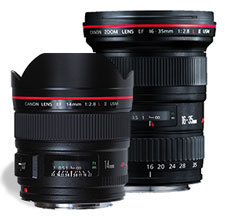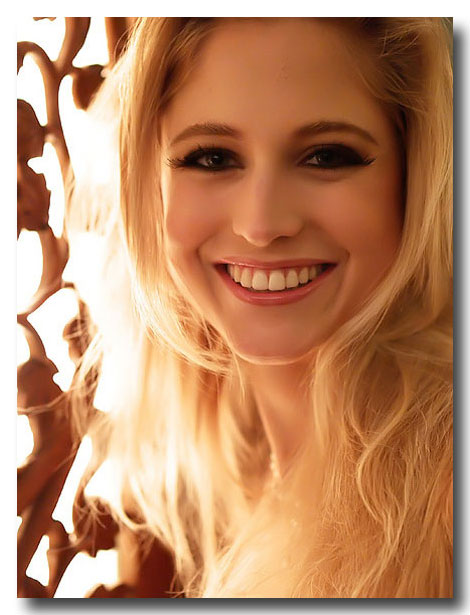Granted, I’m in love with cheap point-and-shoot cameras — confessions right here. They’ve become so powerful, for desktop and Web publishing their output is good enough. On a recent U.S. trip we resisted the temptation of dragging along the big gear and were shooting exclusively with another Fujifilm FinePix F — love those cams. They’re cheap, they’re handy, they’re just alright. My wife is still shooting with the trusty F30! But where’s the challenge. That’s where the “prime” question comes in.

Each have their place. And why deny the achievements of modern zoom lens design and technology? Aren’t you handicapped without zoom?
Sharpness
If you’re a pixel peeper and corner-to-corner sharpness is of utmost importance to you, what are you waiting for. Even today’s best zooms have to be stopped down for tack-sharp images. A prime’s more simple construction achieves better sharpness. Full stop.
Bokeh
An essential part of photography is deciding what will be in focus and what won’t. Real quality prime glass offer smoother bokeh. Different lenses render bokeh differently due to unique optical designs. Generally, portrait and telephoto lenses with large maximum apertures yield more pleasant-looking bokeh than cheaper consumer zoom lenses.
Most fast prime lenses with round-blade apertures such as the “cream machines” Nikon 85/F1.4D (or the newer G Nikkor) and Canon 85/F1.2II USM create exceptionally good-looking, smooth bokeh.
Be careful about different versions of each lens. Do some research on different lenses, based on your photography needs. If you have a good lens, the bokeh should be creamy, smooth and soft, looking pleasing to the eye, with no hard edges.

Speed
In the end the f-stop rules. A prime lens will always be able to have a larger aperture opening — in relative terms that is. It has to do with a relationship between the focal length and size of the opening, allowing a $100 prime lens shooting in conditions a $1,000 zoom can’t. That just one of a few reasons why portrait and street photographers prefer prime lenses, allowing them to shoot in more difficult light and enjoying the ability to isolate their subject/object from the background.
BTW, I’m using both the terms subject and object because… does photography turn subjects into objects? Or objects into subjects? No one seems to really know. Are there only subjects or is it all objects? And the camera lens is called “objective”? Both terms are highly subjective, if not objective in the world of photography…
Still, speed alone isn’t everything. Take the super fast Canon 50/1.2, its bokeh is only mediocre with nervous blur circles.
Do your research before you buy a prime lens. They’re generally lens flat than zooms. Each lens and especially each prime has its unique character. And oh boy can they look more three dimensional than zooms. A friend recently proudly showed off images from his new D800. With a pitiful zoom on it. Great camera, poor glass. Shots looked bland, flat, empty. Spoil your camera with nice glass.
Perspective
Think of the focal length as a tool, a means to bend reality to your needs — to compress or stretch space at will.
What’s more real? The perspective your eyes see, that’s about the 35mm angle of view in full-frame terms, or the attractive effects of a zoom “compressing” vision.
Each to his own. The most striking photography is not the image on Photoshop steroids, but the simple reflection of reality. That’s where the perspective of the normal lens comes in, also called a standard lens; a lens that reproduces a field of view that generally looks “natural” to a human observer under normal viewing conditions, as compared with lenses with longer or shorter focal lengths which produce an expanded or contracted field of view that distorts the perspective when viewed from a “normal” viewing distance.
Question is, what’s a “normal” perspective. What’s the perspective with the least distortion. In other words, the perspective closest to seeing with your own eyes. That’s my base prime.
I opt for the less distortion and less exclusion of the environment. For the occasional portrait a short telephoto will do. Then again, it isn’t the lens alone that creates the perspective but rather your shooting position. To change perspective, you have to change the distance between the subject and the camera.
Cost
Good glass costs. Good fast zooms cost even more. Good zooms are big, they’re heavy, they’re expensive. And still not as fast as a prime. Or seen any F1.4 zoom? You couldn’t carry that monster.
Again, due to more compact construction — and that doesn’t mean lesser quality — primes are less expensive than zooms. The faster the prime the pricier. As a rule: go for the faster version. Get the quality you deserve right from the start. Good glass will outlast any camera body. No need to upgrade the lens anymore. So in the end you save money by spending more in the beginning.
Still, if you don’t care too much about isolating your subject/object then you’re fine with a cheaper F1.8 instead of an F1.4. If separating the subject/object from the environment is essential for your particular style of photography, then don’t even think twice about which one to go for.

Build Quality
Prime lenses are generally better built. You won’t find a zoom with metal casing. With the event of high quality plastics you have no reason to worry about a plastic housing. Also, temperatures, humidity and mold may affect a plastic lens less. But there’s nothing like a beautifully dense, heavy prime lens in your hand. You get what you pay for.
Also Olympus’ latest prime offerings for Micro Four Thirds emphasize build quality, namely the 12mm F2 and 45mm F1.8.
Build quality is also what Fujifilm’s X lineup is all about. Well built and retro-styled, qualities long ignored by camera makers.
Lighter and Smaller
Despite better, more solid overall build quality a prime lens is a lighter lens to work with. If you’re a studio photographer with the camera mounted on a tripod for hours this is of no concern for you. If you move you better think about weight and compactness. A prime lens can make a huge difference that may affect your photography as a whole.
Or is your big gear collecting dust at home because you’re tired of hauling it around? Go light, go compact, go flexible. And your gear is always with you when you need it. A prime makes even a full-framer more compact.
Skills and Composition
A zoom makes life easier, doesn’t it. It’s harder working with a fixed focal length forcing you to physically move to get everything into the frame you want.
Composing and recomposing with a zoom can be done while sitting. A prime coerces you into rethinking. Experiment with different perspectives. See the whole composition and environment, don’t just focus on your subject/object alone.
Move.
Your feet cannot be replaced by a zoom.
Your feet are your wide angle and zoom.
Your zoom even comes with a caveat: you still need to use your feet.
Health
Seriously. There’s the health factor. The effort of carrying around heavy gear doesn’t make up for the weight you gain by holding out in your comfort zone, waiting to fire that zoom.
A prime is good for you. Move. Walk. Get close to your subject/object. Interact and engage. Try different angles. And again. A prime shooter is a happier, healthier shooter.
If you’re reluctant to give up the comfort of zooms, then give at least one prime lens a try.
Standard focal length is 50mm, that’s some 35mm on a cropped sensor. 50mm in full-frame terms is still relatively wide and gives you enough leverage to achieve shallow depth of field.
Put simply, a set of prime lenses will give you image quality that the best, most expensive zoom lens won’t. But it comes at the sacrifice of convenience.
Yes, I’m one of those prime lens snobs.


